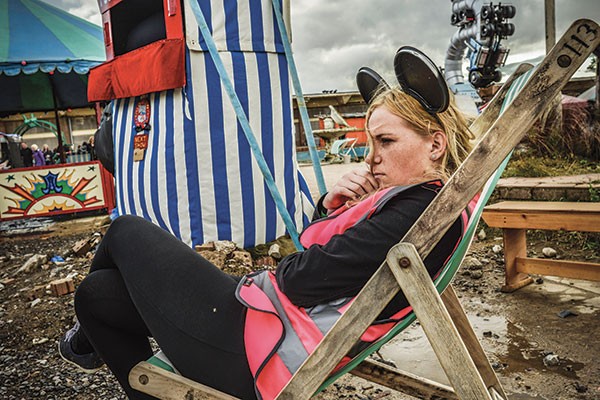As negative as it sounds, I’ve never been to the self-proclaimed “happiest place on earth”. But chances are, neither have you. As touristy and overrun as Disneyland sounds (in all of its five locations), the internationally known amusement park is a staple on almost all bucket lists. There’s just something about that fantasy pink and blue castle, the fake princesses and the fireworks shows that’s endearing. Disneyland is comfortable and pleasant. Disneyland allows us to reminisce about our childhood through rose-tinted glasses, as if it was all Mickey Mouse, castles and rainbows. Disneyland is what we expect.
However, the amusement park agenda is being rewritten by notorious English street artist, Banksy. Banksy has coordinated the perfect antidote to our ample supply of Disney-style amusement parks, and it is as dreary as Disneyland is overwhelming. He calls it “Dismaland”, an interactive “bemusement” park, a “festival of art, amusements and entry-level anarchism”. Dismaland is a temporary art project running from 22 August to 27 September 2015, and while it features the works of 64 different artists (including himself), it epitomises Banksy’s disconcerting tongue-in-cheek style.
While Banksy is known predominantly for his clever street graffiti, Dismaland is his creativity on crack, as he brings his vision together in huge 3D displays. Where Disneyland aims to provide a carefree environment with an infectious sense of childhood joy for those of any age (however artificial) and an escape from the real world, visitors to Banksy’s Dismaland are treated to what has been described as an underwhelming and confusing experience. They brave the park’s immense queues for the privilege of wandering among bedraggled rides and bewilderingly confrontational art works. Tickets are cheap, at just £3 (NZ$7.21), but incredibly hard to come by as people from all over the UK flock to England’s Weston-super-Mare to experience Banksy’s drab twist on the conventional amusement park.
Dismaland is packed with works. One that is particularly confronting, especially for the English, is a portrayal of a dead princess in a written-off pumpkin carriage, guerrilla-style photographers swarming around her to get the perfect shot. While remaining an aesthetically appealing princess scene, this work, of course, references the untimely death of England’s beloved Princess Diana and forces us to reflect on our celebrity-worshipping culture. How far will we go to invade and uncover the lives of those whom our society deems important — and at what cost?
Another particularly poignant and relevant work is a “game” where people pay money to drive a boat filled with migrants around a little pool. Grimly, they have to navigate through other migrants’ bodies — there are no destinations the boats can reach and unload, which is an uncomfortably realistic reflection of the current international migrant issue.
Banksy’s Dismaland has certainly been an unprecedented work and artistic experience. While the project initially garnered interest because of Banksy’s notorious and intriguing reputation, it has become clear to visitors and critics alike that Dismaland is just one in a long line of Banksy’s works that will cement him as one of England’s most innovative street artists. This project also highlights another of Banksy’s strengths — his malleability as an artist, an ability to keep getting bigger, bolder and weirder.
Banksy and a carefully chosen 63 collaborating artists not-so-subtly break down the traditional amusement park experience, dissembling our idea of the park as an inherently perfect and happy place where we can indulge in superficial enjoyment, ignoring the hardships and awkward questions of reality. Banksy injects these uncomfortable references into Dismaland because he doesn’t want us to be able to escape political and social issues as we often can — he throws them back in our face like we’ve paid to see them.



